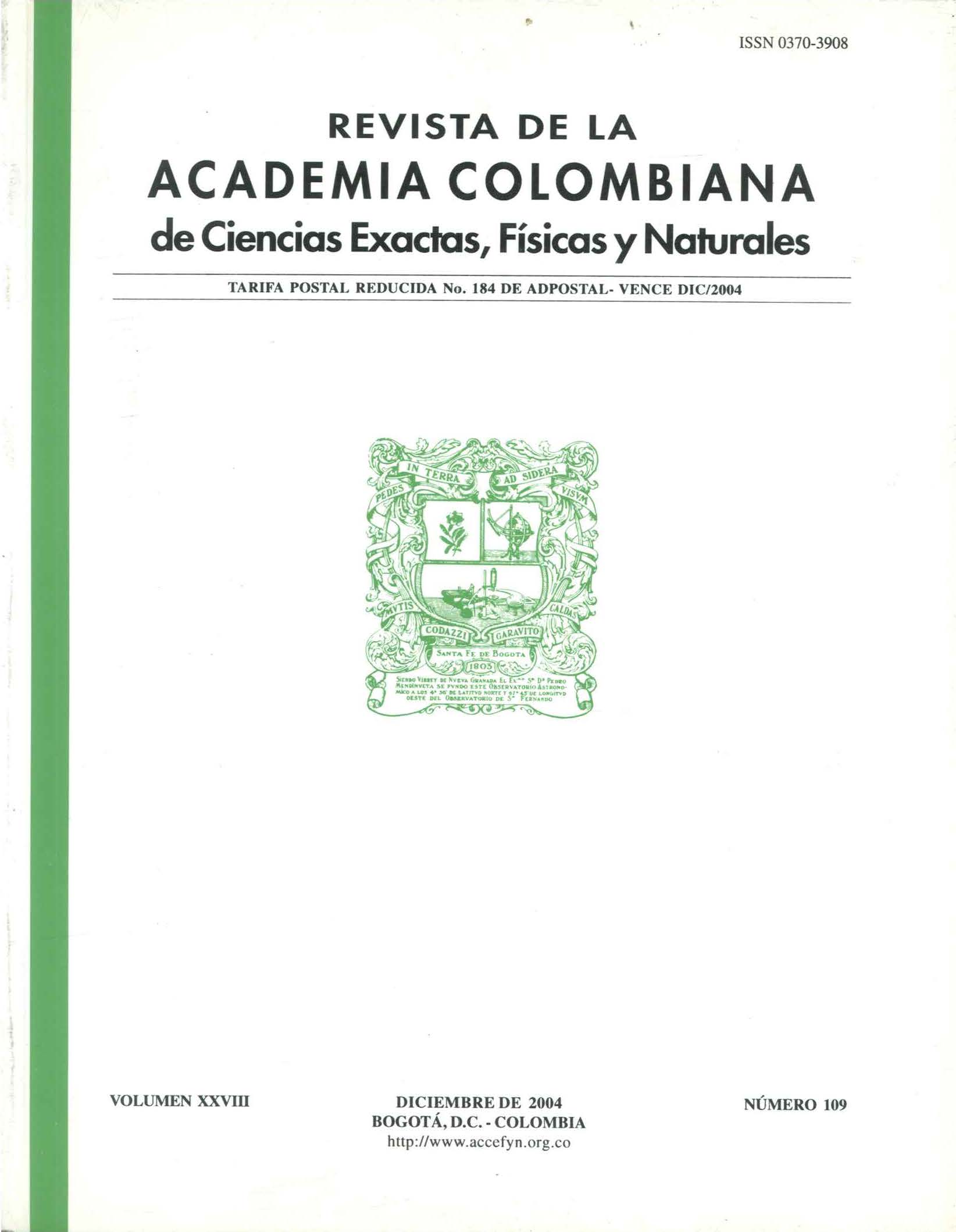Resumen
Se presentan por primera vez para Colombia valores de consumo de oxígeno para Lytechinus variegatus en un ciclo de 24 horas. No se confirmó la expectativa de un ritmo circadiano de actividad reflejado en cambios del consumo de oxígeno. El posible papel ecotrófico de L. variegatus se revisa y discute brevemente.
Referencias
Beddingfield, S.D. & J.B. McClintock. 1998. Differencial survivorship, reproduction, growth and nutrient allocation in the regular echinoid Lytechinus variegatus (Lamarck) fed natural diets. J. Exp. Mar. Biol. Ecol. 226 (2): 195-215
Crisp, D.J. 1984. Energy flow measurements. 284-372. En: Methods for the study of marine benthos. Eds, N. A. Holme y A.D. McIntyre. Blackwell Scientific Publications.
Fergusson, J.C. 1982. Support of metabolism of superficial structures through direct uptake of dissolved primary amines in echinoderms. 345-351. En: Echinoderms Proc. Internat. Conf., Tampa Bay. Ed. J.M. Lawrence. Balkema
Gallo, J. 1985. Contribución al estudio de los equinodrmos del PNNT: I Echinoidea. Programa de Ecosistemas Marinos, Informe Técnico Inderena-Invemar, Santa Marta, 11 pgs.
Garzón-Ferreira, J. 1998. Bahía de Chenge, Parque Natural Tayrona, Colombia. 115-126. En: CARICOM Caribbean coral ref., seagrass and mangrove sites. Unesco.
Greenway, M. 1995. Trophic relationships of macrofauna within a Jamaican seagrass seagrass meadow and the role of the echinoid Lythechinus variegatus (Lamarck). Bull. Mar. Sci. 56 (3): 719-736.
Koch, V. 1999. Epibenthic production and energy flow in the Caete mangrove estuary, North Brazil. ZMT Contributions 6, 97, págs.
Lawrence, J.M. 1987. Echiniodermata. 229-321. En: Animal
Energetics. Volume 2 Bivalvia through Reptilia. Eds. T.J. Pandian y F.J. Vernberg. Academic Press Inc.
McClintock, J.B., T.S. Klinger y L.M. Lawrence. 1982. Feeding preferences of echinoids for plant and animal food models. Bull. Mar. Sci. 32 (1):365-369.
McGlathery, K.J. 1995. Nutrient and grazing influences on a subtropical seagrass community. Mar. Ecol. Prog. Ser. 122 (1-3): 239-252.
Miller, R.J. & K.H. Mann 1973. Ecological energetics of the seaweed zone in a marine bay on the Atlantic coast of Canada. III. Energy transformation by sea urchins. Mar. Biol. 18: 99-114.
Montague, J.R., J.L. Carballo, W.P. Lamas, J.A. Sánchez, E.R. Levine, M. Chacken & J.A. Aguinaga 1995. Population ecology of the sea urchin Lytechinus variegatus in relation to seagrass diversity at two sites in Biscayne Bay: pre- vs. post-hurricane Andrew (1989-1992). Fla. Sci. 58 (2): 234-246.
Moore, H. y B. McPherson 1965. A contribution to the study of the productivity of the urchins Tripneustes sculentus and Lytechinus variegatus. Bull. Mar. Sci. 15 (4): 855-871.
Valentine, J.F. y K.L. Heck 1991. The role of sea urchin grassing sea in regulating subtropical seagrass meadows: evidence from field manipulations in the northern Gulf of Mexico. J. Exp. Mar. Biol.. Ecol. 154 (2): 215-230
Valentine, J.F, K.L. Heck, J. Busby y D. Webb. 1997. Experimental evidence that herbivory increases shoot density and productivity in a subtropical turtlegrass (Thalassia testudinum) meadow. Oecologia 112(2):193-200.

Esta obra está bajo una licencia internacional Creative Commons Atribución-NoComercial-SinDerivadas 4.0.
Derechos de autor 2023 Revista de la Academia Colombiana de Ciencias Exactas, Físicas y Naturales

